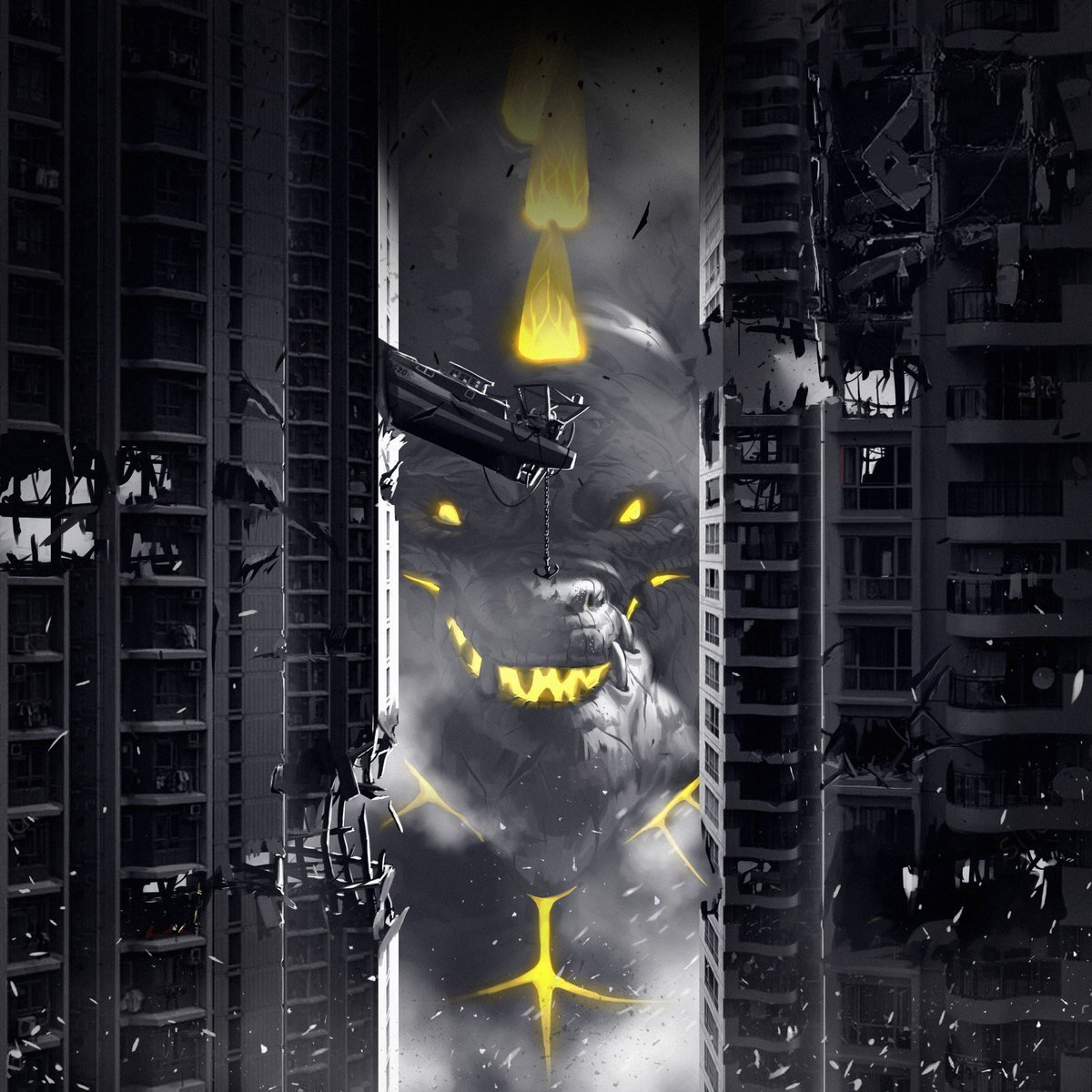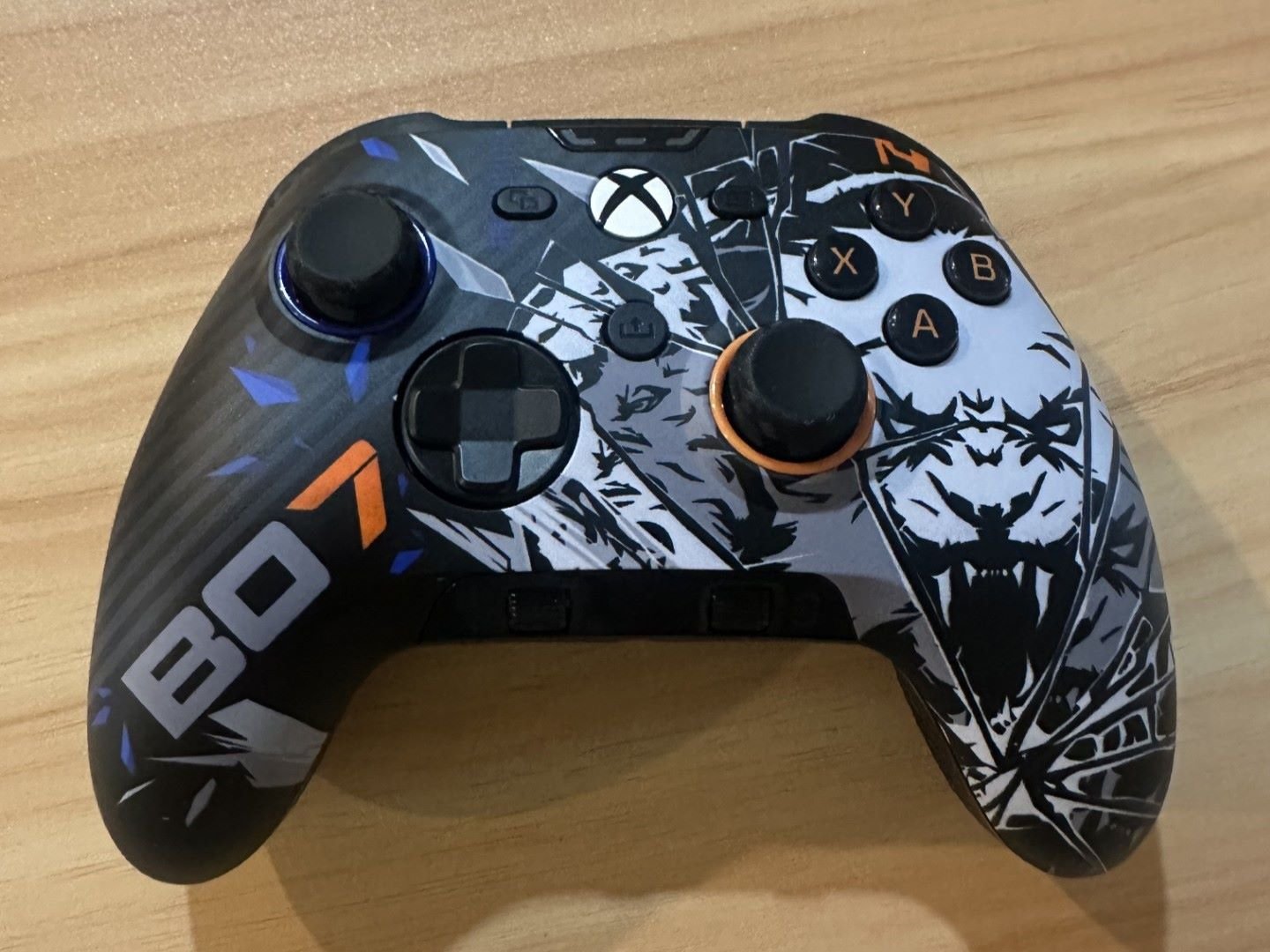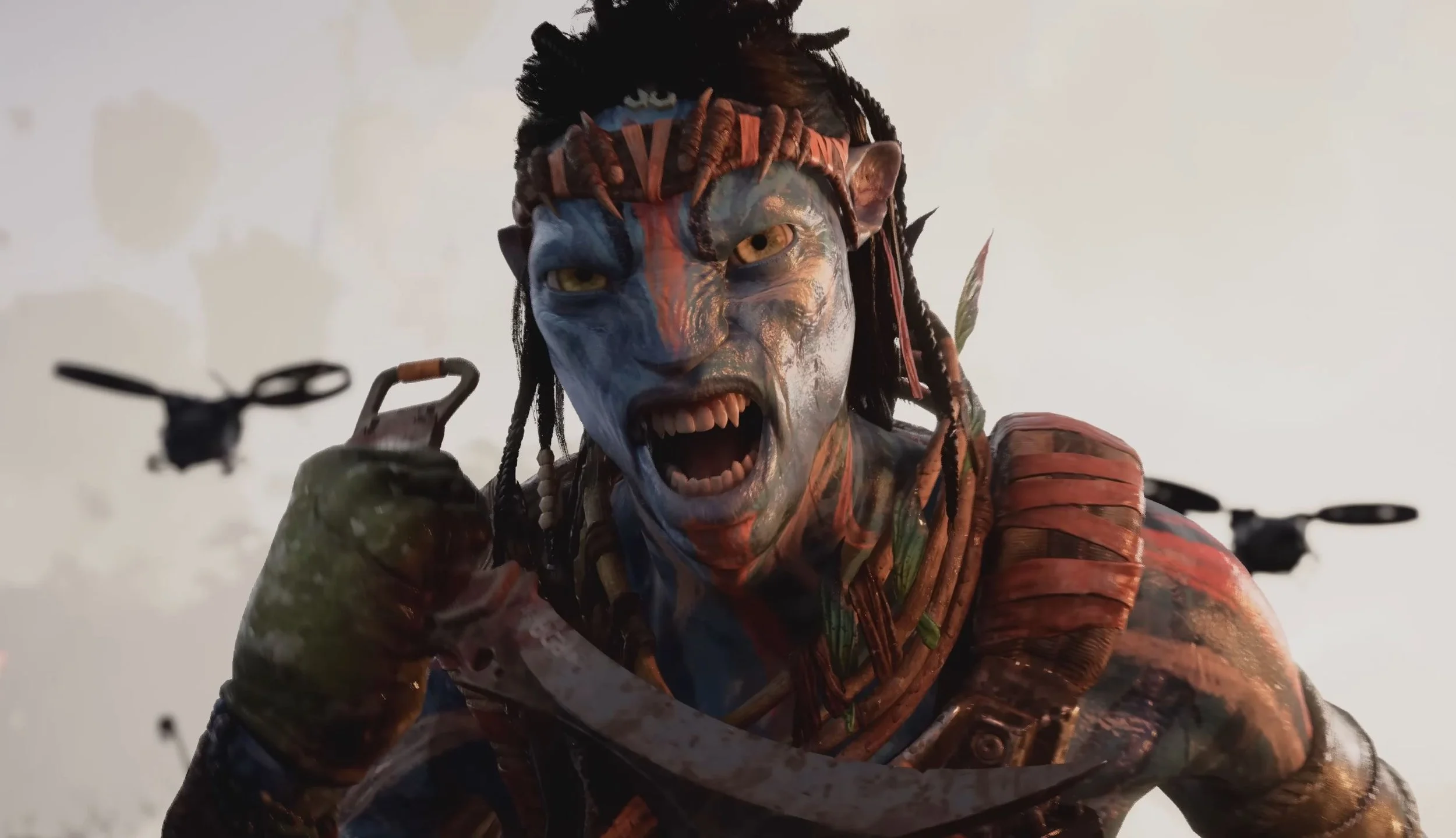Review copy provided by IELLO Games
First and foremost, King of Tokyo: Dark Edition is a collector's edition, which usually means that narrows the audience of the game, but there are some special aspects of the game worth considering, and during the review, I’ll be considering the game for a wider audience—those that are familiar with King of Tokyo and those that haven’t played before.
The return to Richard Garfield’s game is a dark one. it’s filled with deep blacks, ominous reds, and stark neon colors that glare brightly as the city of Tokyo crumbles under the weight of brawling monsters.
And it’s not just a glossy remake. There is an addition to the gameplay that is worth talking about but remember this edition is a shiny toy that you’ll want to show off to your friends. It’s got premium components, new art, and a dependence on the same sturdy gameplay that made the classic so beloved.
It’s a game for 2 to 6 players, and giant monsters are fighting to the death. But is the Dark Edition for you? Let’s find out.
STORY
Then, the city disappears into darkness… The alarms merge with sirens and screams of panic. Under the moonless night, mutant monsters enter Tokyo.
The roaring shadows rampage everything in their path, smashing bridges and knocking down buildings. Wilder and nastier than any ever seen, giant robots and fierce aliens clash in chaotic explosions. The battle will be epic—only one of them will become the master of the devastated city.
But… What are these two silhouettes, terribly familiar, emerging from the dark?
Creepy, right? Builds the suspense and gets players ready for some monster mayhem.
The thing I love about the story in King of Tokyo is that players can finally dispense with any empathy or pity to the human race and revel in the destruction as they command mighty creatures and robots in something less of a duel and more of a barroom scrap. The only difference is the barroom happens to be Tokyo and collateral damage is inevitable.
You won’t have to feel guilty about that, though, because there aren’t any mechanics that deal with civilian casualties. Or citywide destruction. It’s a full-tilt fantastical immersion into the angry tantrums of Gigazaur, The King, Cyber Bunny, Meka Dragon, Kraken, and Alienoid. And when these bad boys and girls start to rampage, a lot of things go wrong.
GAMEPLAY
The tricky part about discussing the gameplay in King of Tokyo: Dark Edition is figuring out the audience. Some of you might have played the original game before. Some of you might not be familiar with the board game at all.
For those that are considering Dark Edition and know how the game works, the only change from traditional play is the Wickedness meter, which offers more powers for players to accrue and adds value to three-of-a-kind rolls for 1s and 2s.
For those that have no experience with what some call “Godzilla-Yahtzee,” it’s a very simple game and you can learn the rules in five minutes or so.
All players select a monster to control during the game. Each monster starts with 10 Health and 0 Victory Points. And there are two ways to win—either one player reaches 20 Victory Points and wins the game or one player survives after all other monsters are defeated.
On a normal turn, players can roll up to three consecutive times with any combination of the six dice to perform actions. Those can be healing, attacking other monsters, collecting energy (which will buy power cards), and collecting sets of numbers to score victory points.
That’s every turn. The only way that turns are modified is by using power cards, which players can buy at the end of their turn. And those are divided into two categories—immediate use by discard or permanent use by keeping in the play area.
The process continues until one of the two victory conditions has been met.
The main other gameplay mechanic is the control of Tokyo. One monster has to be in the city. If you’re playing with five or six players, then two players have to be in the city. If a player is outside of the city, their attack targets the player(s) in Tokyo. But… if a player is in Tokyo, their attack targets every player outside of Tokyo. And they gain victory points if they stay in a full round—but they can’t heal while in the city. It’s an interesting king-of-the-hill mechanic that mixes up who is attacking who and encourages people to both pursue control of Tokyo and also relinquish the city whenever they need to recover health and avoid the attacks of other players.
It’s easy. It’s fun. And it’s inviting to players that maybe aren’t ready for medium-weight or heavy-weight strategy games. It’s even good for avid tabletop gamers to play in between more in-depth games.
What’s different in the Dark Edition is the Wickedness meter. In a normal game of King of Tokyo, three of the symbols are used for changing the state of play with a player’s monster or other players’ monsters. Healing a battered health value, damaging one or more monsters, and collecting energy to buy cards. But the other three faces of the die are numbers. 1, 2, and 3 to be precise. Rolling three-of-a-kind gives you that many victory points. But it also means that if you have to accept three 1s or three 2s at the end of a roll phase, you’re using half or more of your dice to collect not very many victory points.
The Wickedness meter helps counter those low roll results by offering a 10-space meter that monsters will climb up. Two spaces for a roll of three 1s and one space for a roll of three 2s. At certain points on the meter, players can gain a power tile that augments their abilities and contributes positively to their place in the game.
It’s a cool feature that helps support lower rolls that may frustrate players. It even incentivizes those rolls at some points because of the power tiles that can be collected.
Did you roll three 1s, two hearts, and an energy symbol? Well, that’s not bad because you healed your monsters, got some extra energy to buy that one card you’ve been saving for, didn’t force yourself into Tokyo, and progressed on the Wickedness meter to the point where you can get first dibs on an awesome power tile.
It’s a new mechanic that adds value to the game, which makes the Dark Edition more than a vapid cash grab. It includes a seemingly minor tweak that I felt made the game better overall.
VISUALS
Here’s some context. I didn’t own King of Tokyo before reviewing the Dark Edition. I was drawn to the collector’s edition because I loved the new artwork from Paul Mafayon. The color palette and the new design were attractive and I thought it would be an appealing addition to my game library.
And visually, the work they’ve put into this new design pays off. The board is foreboding. The dice or frosted black and clear with bright yellow symbols. The tokens are all high quality. This is a great collector’s edition. I’m so happy to have this on the shelf, and I enjoyed getting it out of the box. It feels premium.
The box insert is also well-designed. Every fits away into small compartments and the board nestles into the inset space to keep them all from jostling around if you’re transporting the box somewhere.
I do dislike one change to the game, though. The dice are too big. Like comically large. People with small hands will have trouble holding them all. You may have to hold them with both hands before rolling. And I would recommend a dice tray, which not everyone has. The weight of the dice and the size make them a little unwieldy. It’s not a deal-breaker, by any means, but it’s strange that they are that big. Having them larger than normal wouldn’t have been a problem, but the new dimensions are outlandish.
REPLAYABILITY
Replay value is something that veteran gamers might wonder about King of Tokyo. And I’ve wondered that myself. I think expansions help, certainly, but the core game might not be something that you bring to the table all the time.
I think the Dark Edition helps with that. The Wickedness meter actually improved the gameplay experience. I think it slowed down gameplay a little, in a good way, and it made all players have another opportunity outside of the power cards to influence the state of play.
I believe the expansions are still compatible with this version, which means you can always add more content. And the big deck of power cards will help to ensure that multiple games in a row will feel different based on the cards revealed and the ones purchased by players.
WHAT IT COULD HAVE DONE BETTER
The redesign is slick. I like the new look and I’m pleased with what they’ve changed for the collector’s edition.
But the dice size seems like an oversight. Or an overenthusiastic design goof. It won’t stop me from playing. It’s just something that will be in the back of my mind when I’m playing.
Also, I’m not sure if the Wickedness meter is enough of a new change to convince gamers that dislike King of Tokyo for its lighter gameplay. But if you like the game already, this will only make you enjoy it more.
VERDICT
There are three kinds of people that might want to buy King of Tokyo: Dark Edition. For the tabletop enthusiast who is flush with cash and eager to show off their collector’s edition to friends, then I think this is worth the buy. Again, that’s for those that just have the money to spare and probably already have a copy in their game library.
Then you’ve got the people like me, who enjoy King of Tokyo but not enough to have purchased it in the past. This might be the nudge you need to go out and grab a copy. The visual aesthetic appeals to me, and the Wickedness meter gently pushes the game in a new and improved way, so maybe it’s time.
And lastly, you’ve got the gamer that has never played before or the newcomer to the hobby. If that’s you, then this is the version I would buy. It looks the best. The box is organized the best. And the game has a new mechanic that is easy to learn and balances the gameplay a bit.
For those of you that already own King of Tokyo and don’t feel the need to have a new copy of the game, go with your gut. You probably don’t need this. And if you’ve never really cared for the game, the Dark Edition isn’t going to convince you otherwise. It’s not targeted at you.
Regardless of which category you fall into, I think that King of Tokyo: Dark Edition is an exciting game, and it’s fun to bring the evil monsters out to fight.























